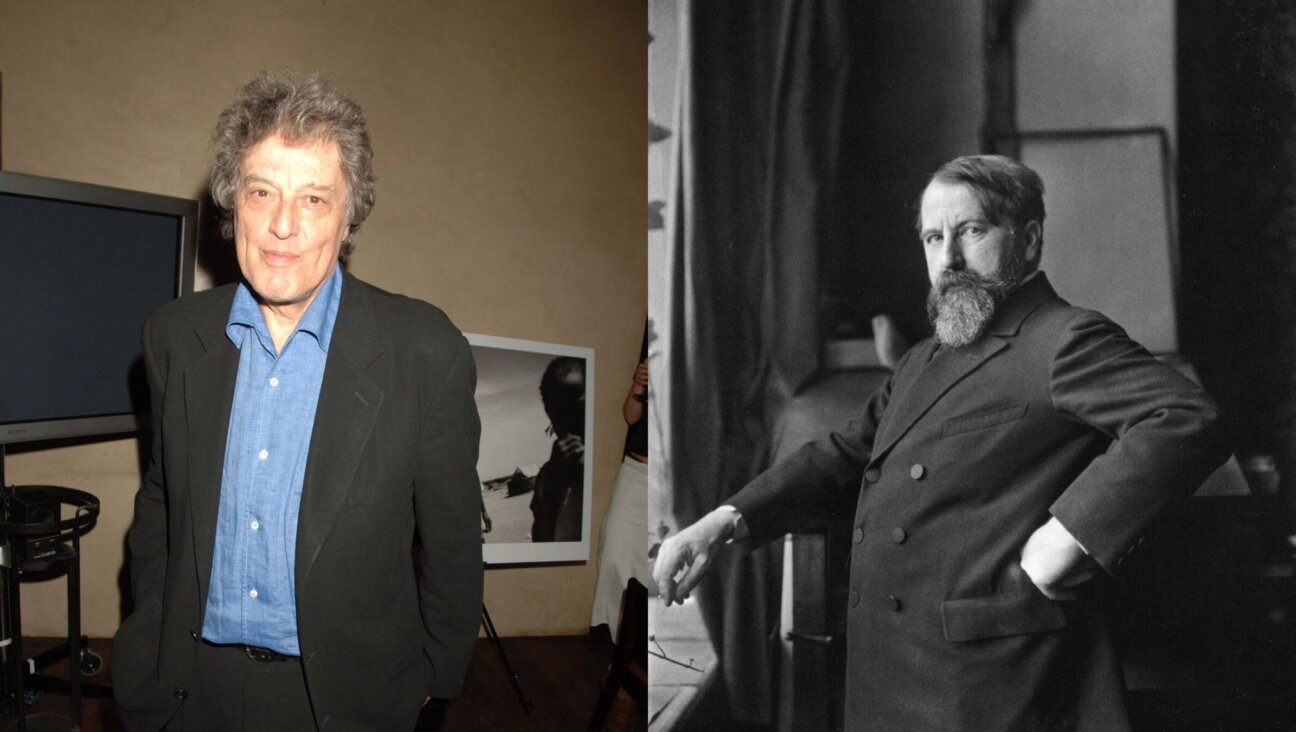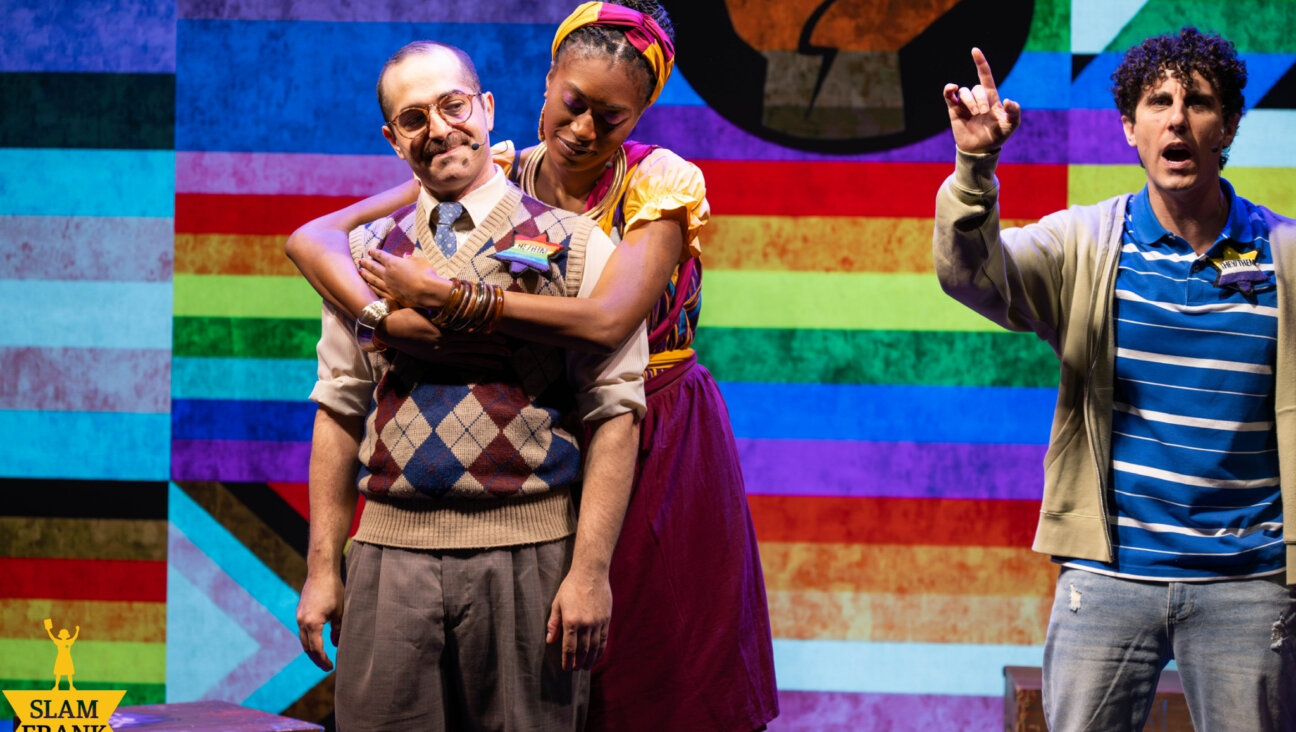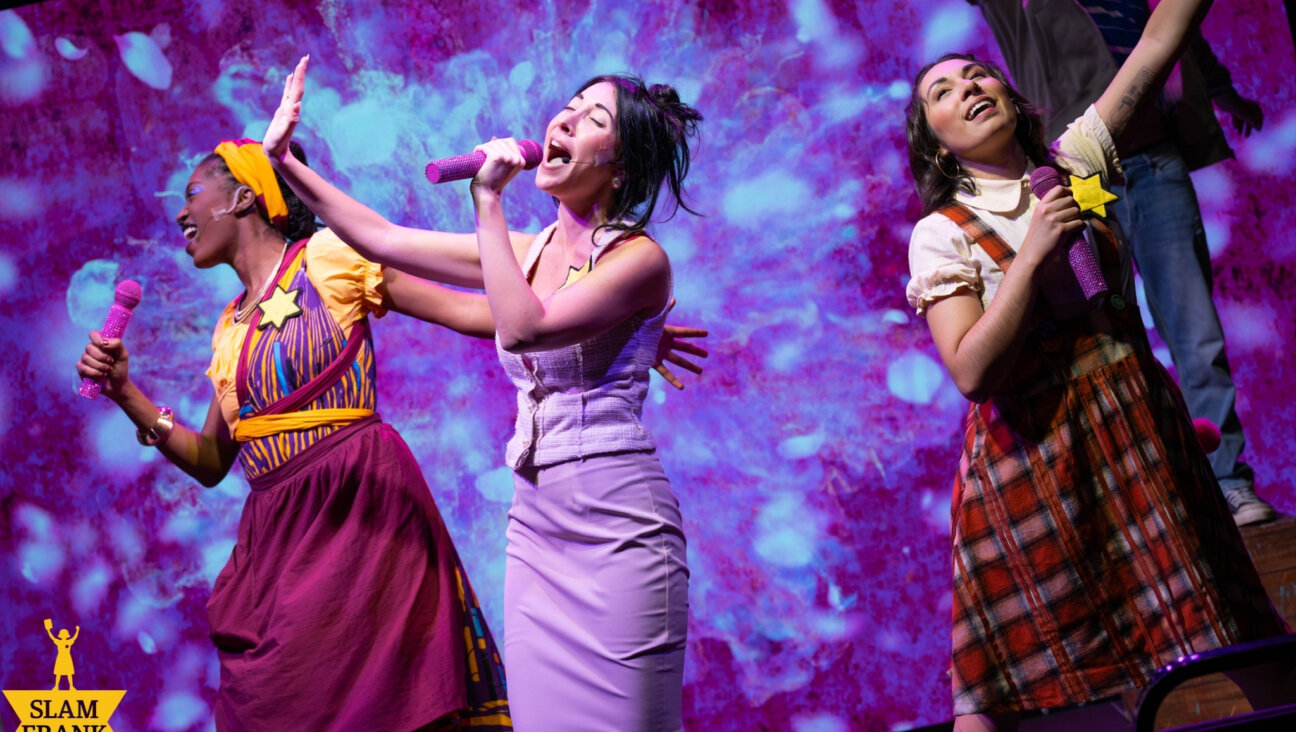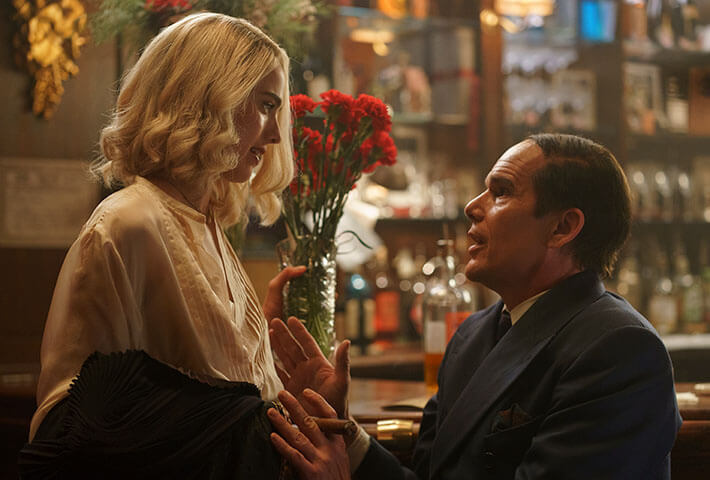The Folksbiene Has A Hit With ‘Yiddler,’ Here’s How It’s Bringing Back The Hits We’ve Forgotten

Daniel Greenwood performs in the March 2018 “From the Yiddish Rialto to the Silver Screen” concert. Image by Courtesy of National Yiddish Theatre Folkesbiene
Yiddish musicals never had much of a chance to become part of the Great American Songbook.
Like so many Jewish cultural developments, the medium was a victim of assimilation in the United States and tragedy in Europe. The works of the Gershwins and of Rodgers and Hammerstein supplanted Yiddish songs as English became the vernacular American Jews recognized as their lingua franca. The songs the Yiddish-speaking generation loved? Without an institution preserving the scores, librettos, and instrumentations, these musical treasures became the stuff of memory, never to be restored or restaged.
But in the midst of an unprecedented Yiddish musical revival, evidenced by the National Yiddish Theatre Folksbiene’s “Fiddler on the Roof” opening Off-Broadway, the 104-year-old company’s Global Yiddish Theatre Restoration Project is busy bringing these forgotten songs, shows and plays to an audience eager to rediscover them.
Folksbiene Artistic Director Zalmen Mlotek launched the project in 2015 with a revival of the 1923 Joseph Rumshinsky operetta “The Golden Bride.” The production, which featured restored arrangements by Mlotek and Harvard musicologist Michael Ochs, received two Drama Desk nominations and played to 24,000 audience members. The show’s reception got Mlotek and the Folksbiene’s Associate Artistic Director Motl Didner wondering what else was out there, leading the pair to more productions, including a concert series of well-known and forgotten Yiddish standards. The process of curating and restoring these pieces is not an easy one.
“Part of the problem is that the industry of Yiddish theater never quite reached the level of American Theater,” Didner, who co-directed “The Golden Bride” with Folksbiene Executive Director Bryna Wasserman, told the Forward. “There was no Music Theatre International that was collecting scores from original productions and preparing them for publication, so the pieces that went into making a show ended up getting scattered.”
Even when the conductor’s score and a pit musician’s specific parts are reunited into a cohesive whole, the work doesn’t end there. Much of the material is handwritten and needs to be deciphered. Plus, there’s the added wrinkle of whether the Yiddish was transliterated or written in Hebrew letters. In the latter case, there’s much confusion as Hebrew reads right-to-left and music is read left-to-right.
But in their tedious preservation work, Didner and Mlotek are giving new life not just to stage operettas, but also to songs from films and revues that reflect the full scope of the Yiddish musical canon. On March 10 at the Museum of Jewish Heritage, they are bringing back “From the Yiddish Rialto to the Silver Screen,” a popular program from 2018 as part of Carnegie Hall’s “Migrations: The Making of America Festival.”
The concert comprises over 15 numbers from musicals from the 1920s and ‘30s; some translations of show tunes written for WEVD radio, a Yiddish-language station owned and operated by the Jewish Daily Forward beginning in 1932; and many more songs originating from the movies of performer and lyricist Molly Picon. Didner and Mlotek watched many of the films, including 1938’s “Mamele” and 1936’s “Yitl Mitn Fidl,” at the Center for Jewish Films at Brandeis and picked their favorites to restore and orchestrate. For the concert performance, the original film clip plays before ceding the stage to a live singer and full orchestra.
“We purposefully mix the program in terms of known, semi-popular works and works that have not been heard and in some cases probably haven’t been heard in decades,” Mlotek said, noting the blend of Klezmer, Jazz, American Musical-style and Vienesse operetta-esque works that make up the evening. “The other part of what we’re doing is training young artists and teaching them not only Yiddish in terms of Yiddish pronunciation, but also Yiddish in terms of stylistic, musical issues that they wouldn’t encounter when they’re doing their typical aria or a musical theater piece.”
One such artist is Rachel Policar, who played the title role of Goldelle in 2015’s “The Golden Bride.” Like many of the Folksbiene’s performers, Policar had never performed in Yiddish before that production and knew only a few stray words courtesy of her grandmother. The German she learned as an opera major helped, too.
“There’s something about the Yiddish language that plays on the heartstrings in a way that no other language really does,” Policar said. “I don’t know if it’s because we’re not really used to hearing it as we are any other language. It’s sort of a new discovery for our ears every time we hear it spoken or sung.”
Policar will be singing a Yiddish translation of Irving Berlin’s 1950 duet “You’re Just In Love” with Daniel Greenwood and the lullaby, “Unter Beymer,” from the 1940 film “Der Vilna Shtot Khazan” among others at the March matinee at the Museum of Jewish Heritage.
The Museum’s Safra Hall is the home base venue for the Folksbiene, having hosted their Yiddish “Fiddler on the Roof” prior to its move uptown. The Restoration Project last performed at the Hall with a workshop of its largest endeavor-to-date: A full remounting of Avrom Goldfaden’s 1879 operetta “The Sorceress,” a pivotal piece of the Yiddish canon first produced in New York by a 14-year-old Boris Thomashevsky, who would go on to become a star and impresario of the Second Avenue theater. The Folksbiene’s full production of “The Sorceress,” the first such staging in over 80 years, will premiere this December.
“It’s the first one that we fully restored in-house,” Didner said of the project, which was pieced together from documents at the YIVO Center for Jewish History in New York.
The orchestration Mlotek and Didner found there was part of the archives of the Vilna Paper Brigade, which preserved a cache of cultural documents from YIVO’s precursor in Poland in 1942.
“They’re falling apart completely,” Mlotek said of the orchestrations. “The paper was never made to last for 110 years and we very carefully digitally photographed each page. From there triangulated the sheet music with a few printed albums of simplified piano music which were sold in theaters at the time.”
While the Folksbiene continues to commission new Yiddish work, Mlotik believes the sometimes-painstaking efforts of The Restoration Project constitute an essential part of the Folksbiene’s mission in the 21st century.
“The Folksbiene originated as a group of actors who were non-actors. They were haberdashers, they were tailors, they were carpenters and they wanted to be in plays in 1915 and later make more serious and socially relevant theater,” Mlotek said. “Now there’s just a need for audiences to know that there is a Yiddish Theater — what the whole oeuvre of Yiddish Theater can be.”
“From the Yiddish Rialto to the Silver Screen,” part of Carnegie Halls “Migrations” series plays at Safra Hall at the Museum of Jewish Heritage March 11 at 2 PM. More information and tickets can be found here.
PJ Grisar is the Forward’s culture intern. He can be reached at [email protected].

















